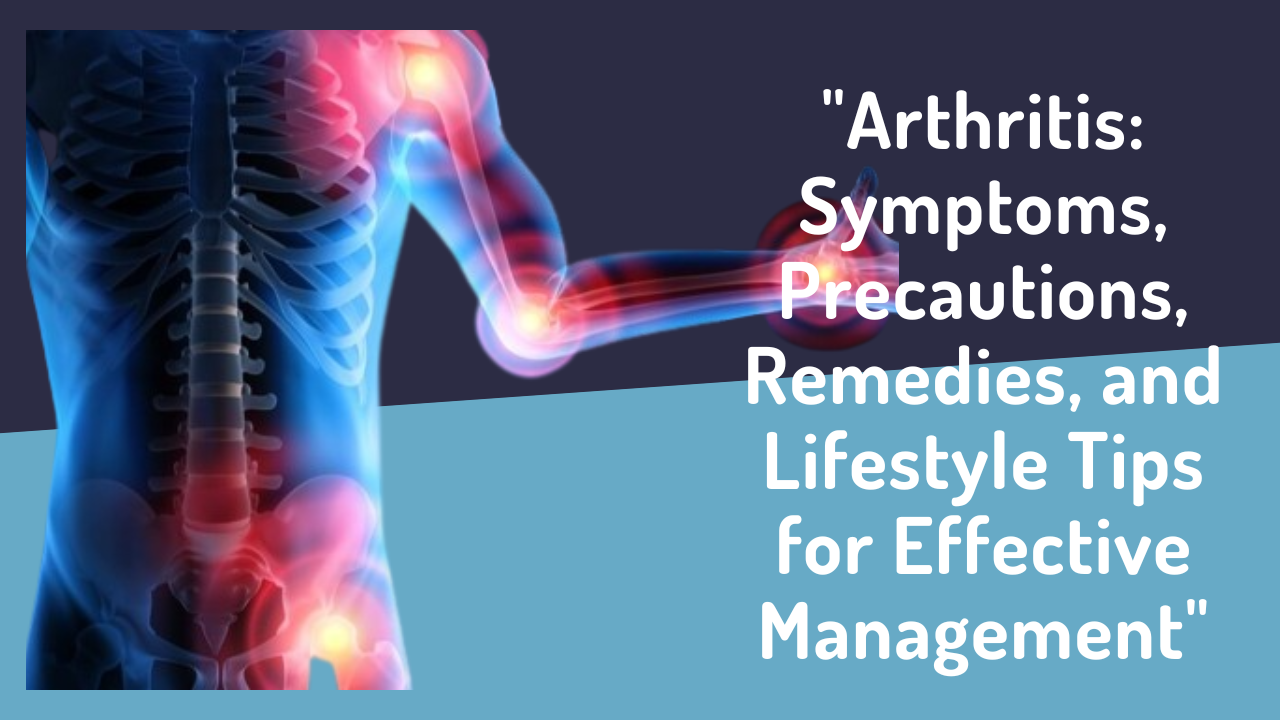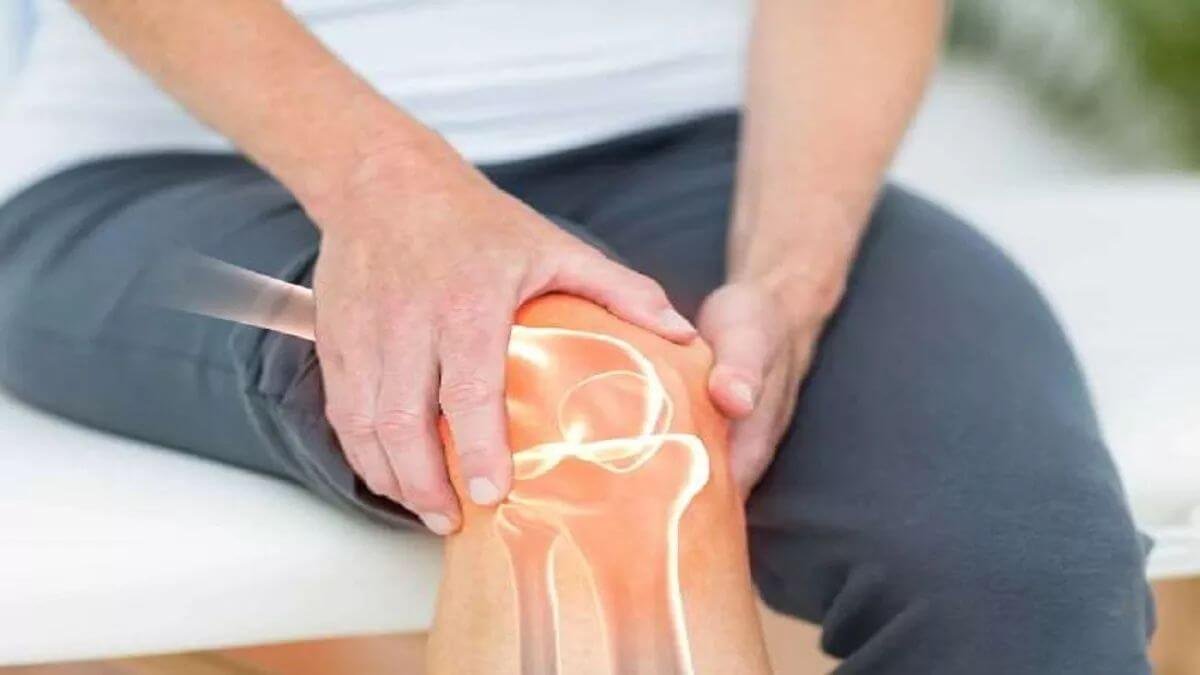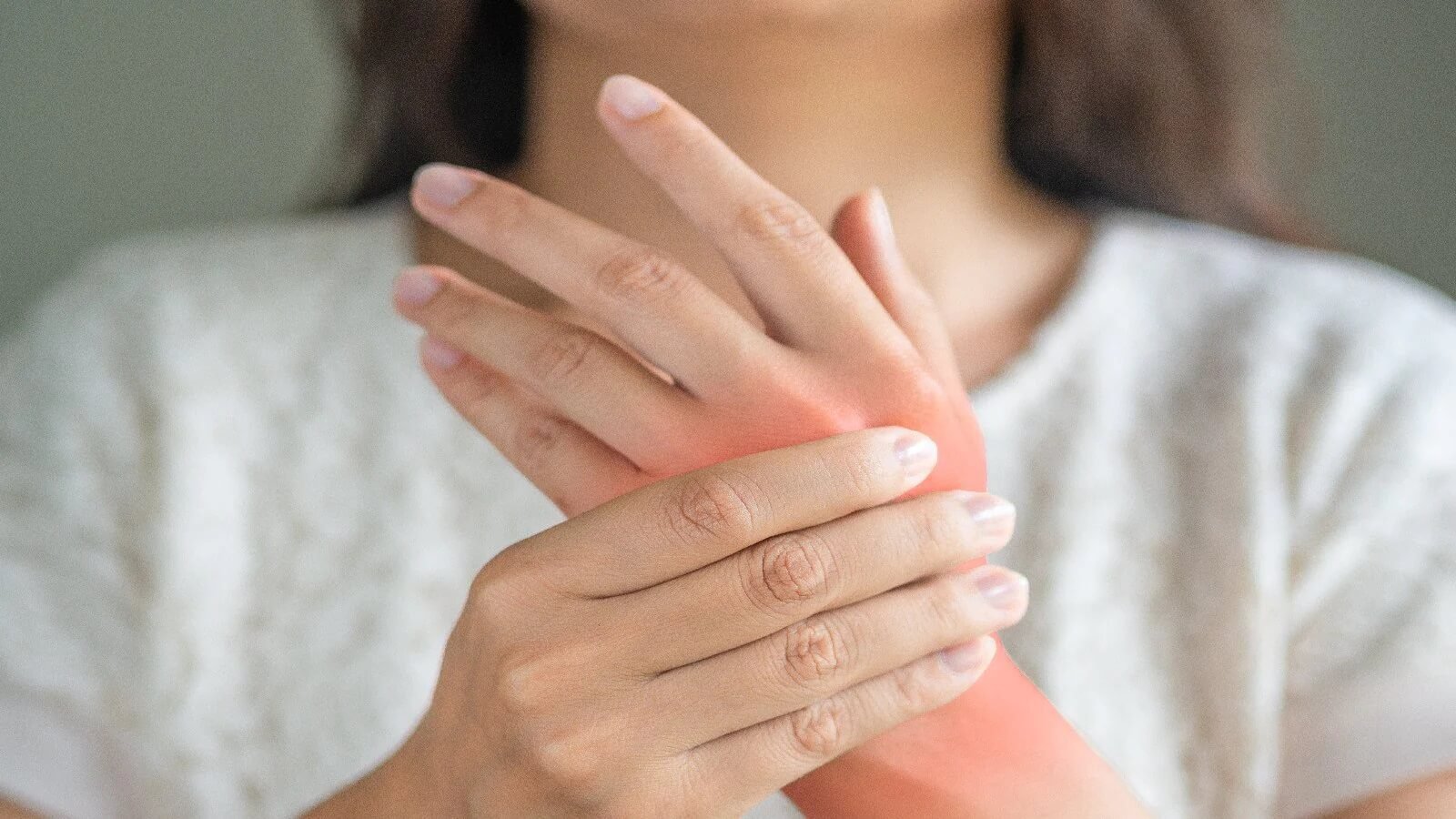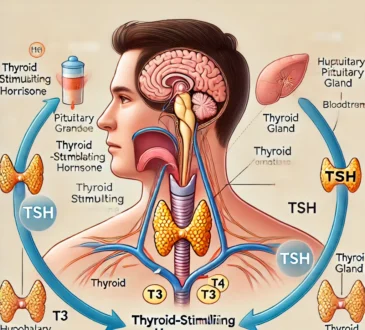“Arthritis: Symptoms, Precautions, Remedies, and Lifestyle Tips for Effective Management”
Arthritis is one of the rapidly growing severe problems globally. According to data, more than 18 crore people in the country are troubled by the problem of some kind of arthritis. In Arthritis, joint pain and swelling conditions, due to which it becomes difficult for people to perform normal functions of routine. It is quite painful for the victims of arthritis to walk, run and climb stairs. Although arthritis is of many types, osteoarthritis is the most common in it. Gout and rheumatoid arthritis are also a type of this. Each type has its own causes and risk factors. According to health experts, the problem of arthritis is quite common among people above 60 years of age, but it is now seen increasing even among young people.
Food items that increase the problem of Arthritis
Different Kinds of Anthesis
1. Osteoarthritis
is a common form of arthritis that affects the joints, particularly those in the hands, knees, hips, and spine. Learn about the causes, symptoms, and various treatment options to manage this degenerative joint condition.
Its Causes
Caused by the gradual breakdown of cartilage, osteoarthritis leads to joint pain, stiffness, and reduced mobility. It often develops due to ageing, common overuse, obesity, or previous joint injuries. Understanding the risk factors and underlying causes can help in prevention and early intervention.
Recognizing the symptoms of osteoarthritis is crucial for timely diagnosis and treatment. Look out for joint pain during movement or after periods of inactivity, joint tenderness, swelling, and a decreased range of motion. Symptoms may worsen over time, affecting daily activities and overall quality of life.
Treatment for osteoarthritis
It aims to alleviate pain, improve joint function, and enhance overall well-being. Non-pharmacological approaches include weight management, regular exercise to strengthen muscles around the joints and physical therapy for targeted joint exercises. Additionally, pain relief can be achieved through over-the-counter or prescription medications, such as nonsteroidal anti-inflammatory drugs (NSAIDs).
In severe cases, surgical interventions like joint replacement or joint fusion may be considered to restore joint function and relieve pain. However, these options are typically explored after conservative measures have been exhausted.
It’s important to consult with a healthcare professional for an accurate diagnosis and personalized treatment plan. They can provide guidance on the most suitable interventions based on the severity of your osteoarthritis and individual circumstances.
By understanding the causes, recognizing symptoms, and exploring various treatment options, individuals with osteoarthritis can actively manage their condition and improve their quality of life. Stay informed, work closely with healthcare professionals, and adopt a multidisciplinary approach to find effective strategies for coping with osteoarthritis.
2. Rheumatoid arthritis (RA)
It is an autoimmune disorder that primarily affects the joints, causing chronic inflammation and joint damage. Gain insights into the symptoms, underlying causes, and available treatment approaches for managing rheumatoid arthritis.
RA occurs when the immune system mistakenly attacks healthy joint tissues, leading to persistent inflammation. This results in symptoms such as joint pain, swelling, stiffness, fatigue, and a general feeling of malaise. Unlike osteoarthritis, RA can affect multiple joints simultaneously and may also impact other organs in the body.
Its Causes
The exact cause of rheumatoid arthritis remains unknown, but genetic factors, environmental triggers, and an overactive immune response are believed to play a role. Early detection and intervention are crucial to prevent or minimize joint damage.
The goal of RA treatment is to alleviate symptoms, slow disease progression, and improve overall quality of life. Medications known as disease-modifying antirheumatic drugs (DMARDs) are commonly prescribed to suppress the immune system and reduce inflammation. Biologic DMARDs specifically target molecules involved in the immune response.
Treatment
In addition to medications, lifestyle modifications can aid in managing rheumatoid arthritis. Regular exercise, tailored to individual capabilities, helps improve joint flexibility, muscle strength, and overall well-being. Physical therapy may also be recommended to enhance joint function and manage pain.
Pain relief can be achieved through the use of nonsteroidal anti-inflammatory drugs (NSAIDs) or corticosteroids. Occupational therapy can provide guidance on adapting daily activities to minimize joint stress and maximize independence.
In some cases, surgical interventions such as joint replacement surgery may be necessary to restore mobility and alleviate pain when joint damage is severe.
Collaborating closely with a healthcare professional, typically a rheumatologist, is crucial for the comprehensive management of rheumatoid arthritis. They can tailor a treatment plan based on the individual’s specific needs, monitor disease progression, and make adjustments as necessary.
By understanding the symptoms, identifying the causes, and exploring various treatment approaches, individuals with rheumatoid arthritis can actively participate in their care and improve their overall quality of life. Staying informed, seeking support, and adopting a multidimensional approach is key to effectively managing rheumatoid arthritis.
3. Gout
It is a type of arthritis that occurs when there is a buildup of uric acid crystals in the joints, leading to sudden and severe episodes of pain, swelling, and inflammation. Learn about the symptoms, underlying causes, and effective management strategies for gout.
The main symptom of gout is an acute attack of joint pain, commonly affecting the big toe, but it can also occur in other joints such as the ankle, knee, or wrist. The affected joint becomes swollen, red, and tender to the touch. Gout attacks often come on suddenly and can be triggered by factors like diet, alcohol consumption, obesity, certain medications, and underlying health conditions.
Causes
The underlying cause of gout is an excessive buildup of uric acid in the bloodstream. Uric acid is a waste product that is normally excreted by the kidneys. When the body produces too much uric acid or fails to eliminate it efficiently, it can lead to the formation of sharp uric acid crystals in the joints, causing inflammation and pain.
Managing gout involves a combination of lifestyle changes and medication to prevent and alleviate gout attacks. Dietary modifications play a crucial role in reducing uric acid levels. Avoiding or limiting foods high in purines, such as red meat, seafood, organ meats, and alcohol, can help decrease uric acid production. Increasing water intake and consuming foods low in purines, such as fruits, vegetables, whole grains, and low-fat dairy products, can promote uric acid excretion.
Treatment
Medications are commonly prescribed to manage gout. Nonsteroidal anti-inflammatory drugs (NSAIDs) are used to reduce pain and inflammation during gout attacks. Colchicine is another medication that can be used to relieve gout symptoms. Long-term prevention of gout attacks often involves medications like allopurinol or febuxostat, which work to lower uric acid levels in the body.
Maintaining a healthy weight, engaging in regular physical activity, and managing underlying health conditions such as high blood pressure or diabetes are important factors in gout management. Limiting alcohol consumption and staying adequately hydrated can also help prevent gout attacks.
Working closely with a healthcare professional, typically a rheumatologist, is essential for effective gout management. They can provide an accurate diagnosis, recommend appropriate medications, and offer guidance on lifestyle modifications.
By understanding the symptoms, addressing underlying causes, and implementing lifestyle changes, individuals with gout can effectively manage the condition and reduce the frequency and severity of gout attacks. With proper management, it is possible to control gout and improve overall quality of life.
World Arthritis Day is celebrated every year on October 12 with the aim of reducing the increasing risk of arthritis and raising people’s awareness about it. Health experts say, even in young people, the risk of arthritis is increasing, so this risk should not be taken lightly.
Some MORE methods to treat Arthritis
Arthritis is a multifaceted condition that not only affects the physical well-being of individuals but also has an impact on their daily lives and emotional health. In addition to the symptoms, precautions, and remedies mentioned earlier, here are some additional insights and lifestyle tips to help manage arthritis effectively.
Manage Stress: Living with chronic pain and limitations can be emotionally taxing. High-stress levels can exacerbate arthritis symptoms and lead to increased inflammation. Engaging in stress-reducing activities such as meditation, deep breathing exercises, yoga, or pursuing hobbies can help alleviate stress and promote overall well-being.
Assistive Devices: Depending on the severity of arthritis, using assistive devices can provide support and ease daily activities. Simple aids like jar openers, long-handled reaches, or adaptive tools for gripping can reduce strain on the joints and make tasks more manageable.
Gentle Exercise: Regular physical activity is crucial for maintaining joint flexibility, muscle strength, and overall fitness. Low-impact exercises such as swimming, cycling, tai chi, or gentle stretching routines can be beneficial. Consult with a physical therapist or a qualified fitness professional to design an exercise plan tailored to your specific needs and abilities.
Balance Activity and Rest: Finding the right balance between activity and rest is essential. Pacing yourself throughout the day and taking breaks when needed can prevent overexertion and reduce joint stress. It’s important to listen to your body and avoid pushing beyond your limits, as this can lead to increased pain and inflammation.
Heat and Cold Therapy: Experimenting with heat and cold therapy can provide relief for arthritis symptoms. Warm showers, heating pads, or warm compresses can help relax muscles and ease joint stiffness. Cold therapy, using ice packs or cold compresses, can reduce inflammation and numb pain. Explore which method works best for you and use it as needed.
Stay Hydrated: Drinking an adequate amount of water is essential for joint health. Proper hydration helps keep the joints lubricated and supports overall bodily functions. Aim to consume an ample amount of water throughout the day to maintain optimal hydration levels.
Sleep Well: Quality sleep is vital for overall health and well-being, including managing arthritis symptoms. Create a sleep-friendly environment, establish a regular bedtime routine, and ensure your mattress and pillows provide adequate support. If discomfort interferes with your sleep, consider using pillows or cushions to find a more comfortable position.
Social Support: Arthritis can sometimes feel isolating, but connecting with others facing similar challenges can provide emotional support. Consider joining support groups, either in person or online, where you can share experiences, exchange tips, and receive encouragement.
Emerging Treatments: Medical research is continually advancing, leading to the development of new treatments for arthritis. Some emerging therapies include biological medications, which target specific molecules involved in the inflammatory process. These medications can help reduce joint inflammation and slow down the progression of certain types of arthritis. Additionally, regenerative medicine techniques, such as platelet-rich plasma (PRP) therapy or stem cell therapy, are being explored for their potential in promoting tissue repair and reducing joint pain.
Complementary Therapies: Many individuals with arthritis find relief and improved well-being through complementary therapies. These therapies can be used alongside traditional medical treatments and may include acupuncture, massage therapy, chiropractic care, or herbal remedies. It’s important to consult with healthcare professionals before starting any complementary therapy to ensure their safety and efficacy.
Mind-Body Techniques: Mind-body techniques can play a significant role in managing arthritis symptoms and enhancing overall well-being. Practices such as mindfulness meditation, guided imagery, and cognitive-behavioural therapy can help individuals cope with pain, reduce stress, and improve their emotional resilience.
Assistive Technology: Technological advancements have led to the development of innovative assistive devices for individuals with arthritis. These include adaptive tools with ergonomic designs, voice-activated home assistants for hands-free assistance, and wearable devices that track joint movement and provide feedback for better management of activities.
Nutritional Supplements: While maintaining a balanced diet is crucial, some individuals may benefit from specific nutritional supplements. Omega-3 fatty acids, found in fish oil or flaxseed oil, have anti-inflammatory properties that may help reduce joint pain and stiffness. Turmeric and ginger supplements are also believed to have natural anti-inflammatory effects. However, it’s important to consult with a healthcare professional before starting any supplements to ensure their appropriateness and dosage.
Clinical Tlsria: Participation in clinical trials offers an opportunity to access innovative treatments and contribute to scientific advancements in arthritis research. Clinical trials evaluate new medications, therapies, or interventions, providing valuable insights into their effectiveness and safety. Consider discussing with your healthcare provider if participating in a clinical trial is a suitable option for you







